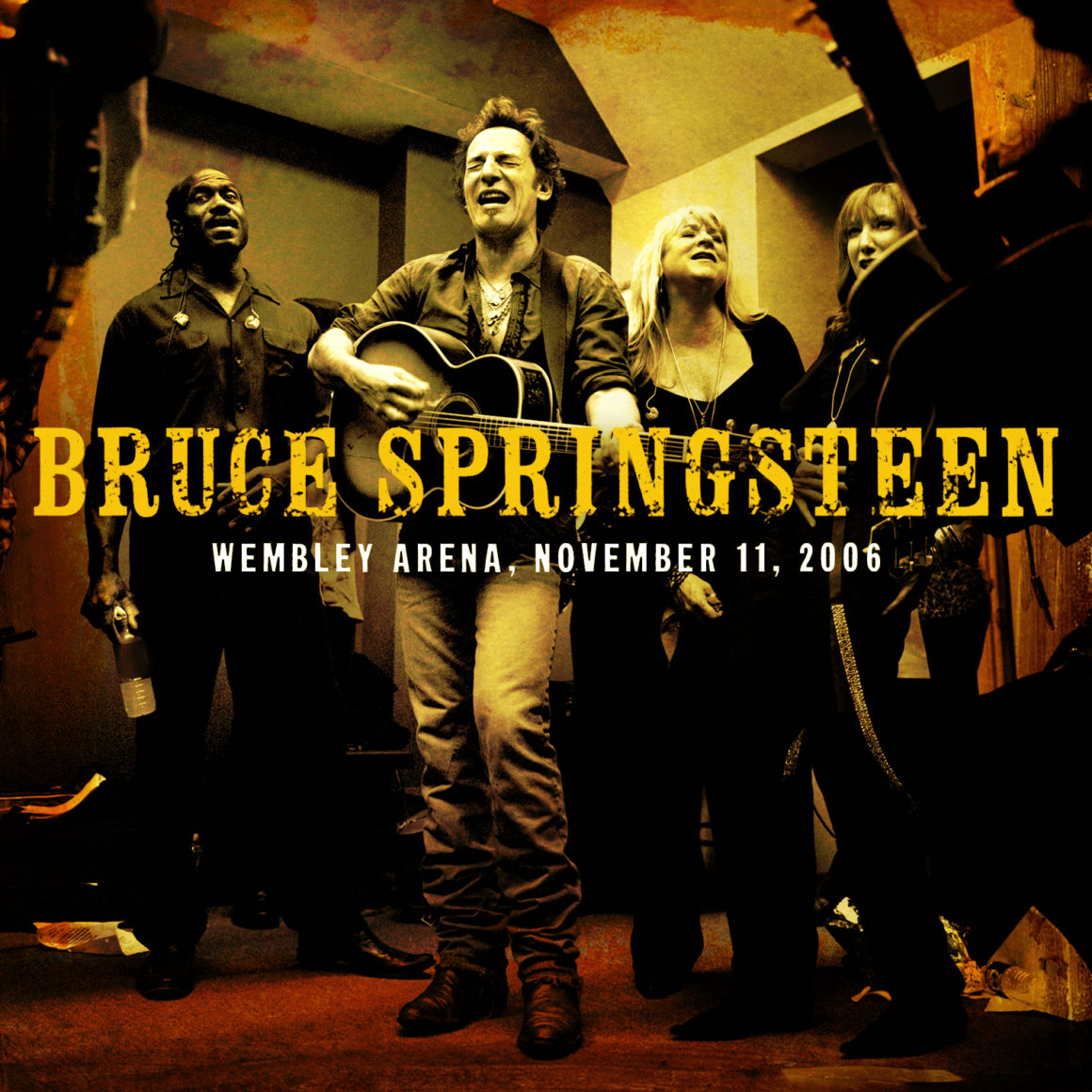
LISTEN NOW: Palais De Congrès Acropolis, Nice, France, May 18, 1997
By Erik Flannigan
Every Springsteen tour starts with a vision and an underlying narrative. What story is our favorite artist telling through his setlist and presentation? Over time, setlists typically evolve and tours explore new themes, keeping things fresh but sometimes departing significantly from the initial concept.
Springsteen’s solo-acoustic tour for The Ghost of Tom Joad was unwavering in conserving its original vision. Beyond special nights in Freehold and Asbury Park, from the earliest shows in late 1995 through final gigs in the spring of 1997, the core songs from the album served as the spine of the show, while Bruce’s performances stayed steely and steady. Nice, France, a stop from the tail-end of the Joad tour and the first Archive release from 1997, presents an opportunity to reassess this compelling commitment from the little-heard fifth leg.
I had the good fortune to see a couple of the early shows on the Joad tour, at the Wiltern in Los Angeles on November 26 and 27, 1995. With the exception of the final encore (and album closer) “My Best Was Never Good Enough,” Bruce performed the same songs from Joad at the LA shows as he would in Nice, more than 120 performances later. “Darkness on the Edge of Town,” “Murder Incorporated,” “Born in the U.S.A.,” and “This Hard Land” are also intact. Adding “Brothers Under the Bridge,” which debuted the second night at the Wiltern, 13 songs remained in the set, anchoring the tale and tone of this special solo outing.
Which isn’t to say those songs are played exactly as they were in the fall of 1995. The Nice performance is unmistakably honed after a year and a half on the road without a band. Case in point: Springsteen’s guitar playing feels less muscular but more masterly. Because the arrangements largely remain faithful, the differences are subtle, but a song like “Murder Incorporated” has evolved from stark noir to more of a beautifully sung cautionary tale, with Bruce’s guitar weaving an unsettling rhythmic bed that lulls us into submission.
“Straight Time,” “Highway 29,” and the title track play truer to form, but there’s extra weariness in the tone of the protagonists that makes their stories resonate all the more. Heard through a post-Western Stars filter, “Highway 29” feels like a progenitor to that recent mastework, especially its title track. Truest of all is the four-pack that served as the lyrical denouement for show. Nice gets sublime readings of “Sinaloa Cowboys,” “The Line,” “Balboa Park,” and “Across The Border,” and the verb is accurate for these near novellas.
On Broadway, Springsteen set up familiar songs with stories and vice versa, but this storytelling sequence is more like an author reading to an unfamiliar audience. As such, Bruce’s performances of the material place a premium on the vivid details that make the narrative spark to life. For a performer who has earned the position of having his audiences eat out of the palm of his hand, brokering this type of connection with more demanding material must have been a fascinating challenge. Admiration for how he pulls it off night after night is well earned.
Other Joad tour stalwarts are also in top form in Nice. The 12-string reinvention of “Darkness on the Edge of Town,” debuted at the Christic shows in 1990, still sends shivers up the spine. “Brothers Under the Bridge” is perhaps the most underappreciated entry among Springsteen’s Vietnam Veterans material. The song was still unreleased when Bruce performed it on the Joad tour (it eventually came out on Tracks in 1998). The final line, “One minute you’re right there, and something slips,” remains one of the most haunting in the canon.
Nice would also see the final tour performance of “It’s the Little Things That Count.” Bruce revisited the song a couple of times at the Somerville, MA solo shows in 2003, but it has been unheard ever since. The song was written for Joad and later considered for Devils & Dust, but it remains officially unreleased in studio form. Gotta love the transition from “Little Things” to “Red Headed Woman”: “Speaking of tongues…”
Of course Joad tour setlists were not totally rigid. Nice finds Springsteen in something of a nostalgic mood, pulling the kindred “Growin’ Up” and “Saint in the City” into the set, connecting the Joad era to Springsteen’s last turn as a solo artist in 1972. He also takes “You Can Look (But You Better Not Touch)” out for an entertaining spin in its tour debut. “Working on the Highway” is good fun, too, exposing the Born in the U.S.A. song’s Nebraska roots — listen for Bruce hitting a particularly impressive high note at the end of “cruel cruel worrrrrld.”
The final reinvention of the night comes with “The Promised Land.” As evidenced by his use of Suicide’s “Dream Baby Dream” to close shows on his next solo tour in 2005, Springsteen is attracted to mesmeric arrangements. The transformation of “The Promised Land” could be the most radical of all his reinterpretations and merits reappreciation for sheer performance beauty and vocal control. We’re transfixed until that final percussive thwack breaks the trance of a spellbinding evening and a tour that stayed true to itself from the first show to the last.

